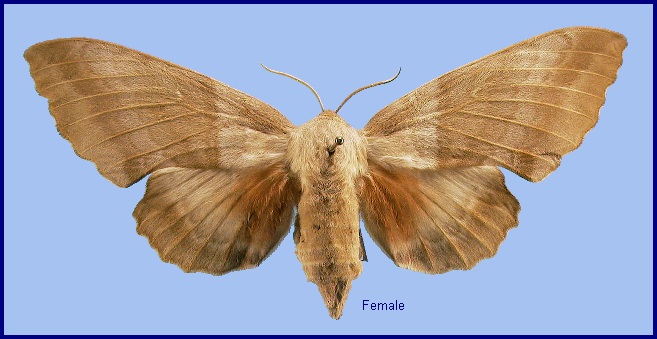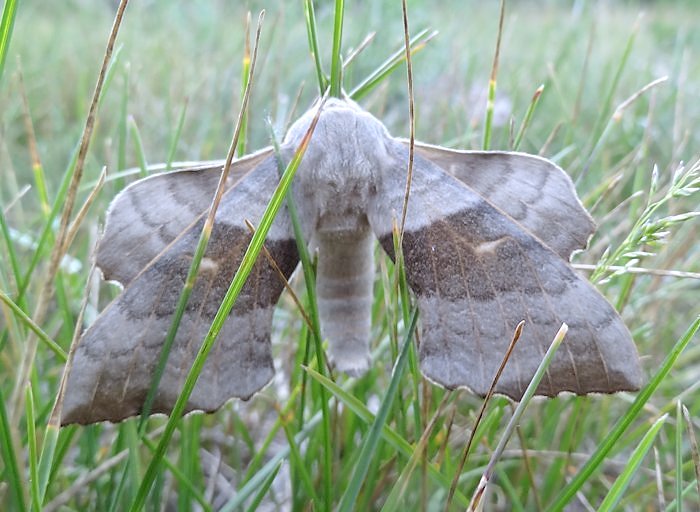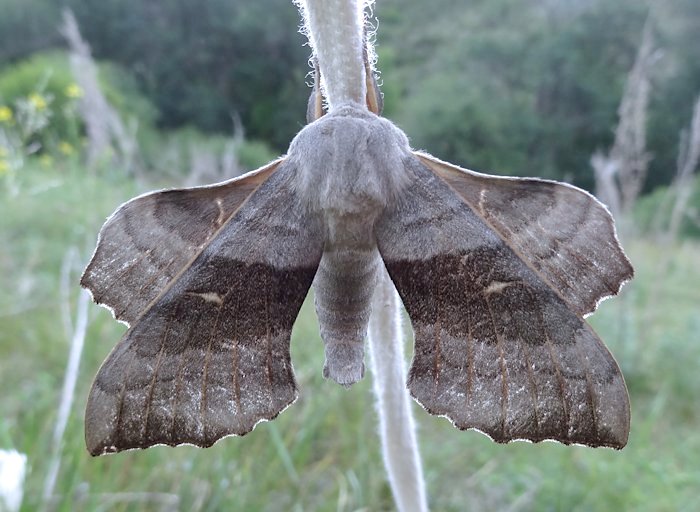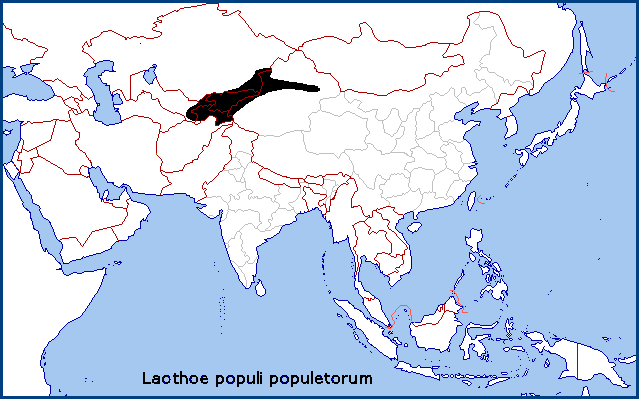UK: Poplar Hawkmoth, F: Sphinx du Peuplier, D: Pappelschwärmer, RUS: Topolevyi Brazhnik, S: Poppel-Nattsvärmare; Poppelsvärmare, NL: Populierpijlstaart, CZ: Zubokřídlec topolový; Lišaj topolový, H: nyárfaszender, E: esfinge del chopo; cuerno verde, PL: Zawisak topolowiec; Nastrosz topolowiec, FIN: Poppelikiitäjä, I: sfinge del pioppo, HR: topolin ljiljak, DK: Poppelsværmer, N: Ospesvermer.
Smerinthus populi var. populetorum Staudinger, 1887, Stettiner Entomologische Zeitung 48: 65.Type locality: [Kyrgyzstan,] Osch [Osh] (Haberhauer) [MNHU]; Lectotype designated by Danner, Eitschberger & Surholt, 1998, Herbipoliana 4(1): 111.
(Taxonomic note. This taxon was given specific status by Zolotuhin (2018) based on a 2.35% DNA barcode difference from Laothoe populi populi (Linnaeus, 1758); there were no morphological differences. Given that natural variation within clearly defined taxa of the Smerinthini can vary up to 3% or more, a variation of 3.5-4% is required before a population can be considered a new species. A difference of 3% or less indicates either a new subspecies or just natural variation within a given population.)
Holarctic; western Palaearctic region. Pleistocene refuge: Monocentric -- Turkestan refuge.

Wingspan: 70--120mm. Very like Laothoe populi populi. Many have a reddish tone, which is easily produced by subjecting developing pupae to heat, or grey replacing the pinkish tint.


Unknown, apart from frequenting river valleys, especially above 1000m altitude.
Probably bivoltine; April-May and again in July/August.
OVUM: Pale green, almost sperical and large for the size of moth.
LARVA: Undescribed, but illustrated in Toropov, Milko, Zhdanko & Evdoshenko (2023)
Hostplants. Recorded on Populus and Salix (Pittaway, 1993).
PUPA: Undescribed.
None recorded.
River valleys in the mountains and foothills of eastern Uzbekistan (Shermatov et al., 2021; Omonov, Rahimov, Askarova & Khomidova, 2023), Tajikistan, Kyrgyzstan (Korb, 2018; Toropov, Milko, Zhdanko & Evdoshenko, 2023) and south-eastern Kazakhstan (south of the Kyrgyz Steppe) to central Xinjiang in northwest China (Alphéraky, 1882; Pittaway & Kitching, 2000). An individual recorded from southeast of Turpan, Xinjiang, on 14.vi.2019 appears to be Laothoe populi populetorum (Staudinger, 1887) (Skulltronix, iNaturalist 2019).
In northwestern China the Dzungarian Gate/Gap and the inhospitable deserts to either side appear to separate the more northern population of Laothoe populi populi (Linnaeus, 1758) from the southern Laothoe populi populetorum, although this narrow barrier may be breaking down due to the extensive planting of poplar trees. Three other species have reached the Yining/Gulja area by exploiting planted trees, namely Smerinthus ocellatus, Smerinthus planus and Callambulyx tatarinovii tatarinovii (Pittaway & Kitching, 2000).
Extra-limital range. None.

From the Norway, Ireland, Portugal and Spain eastwards across the Urals to western Siberia and the Altai, as well as northwestern China (Xinjiang Province) south to Tacheng as subsp. Laothoe populi populi. Also the Ukraine, southern Russia, and western/northern Turkey.
 Return to species list
Return to species list